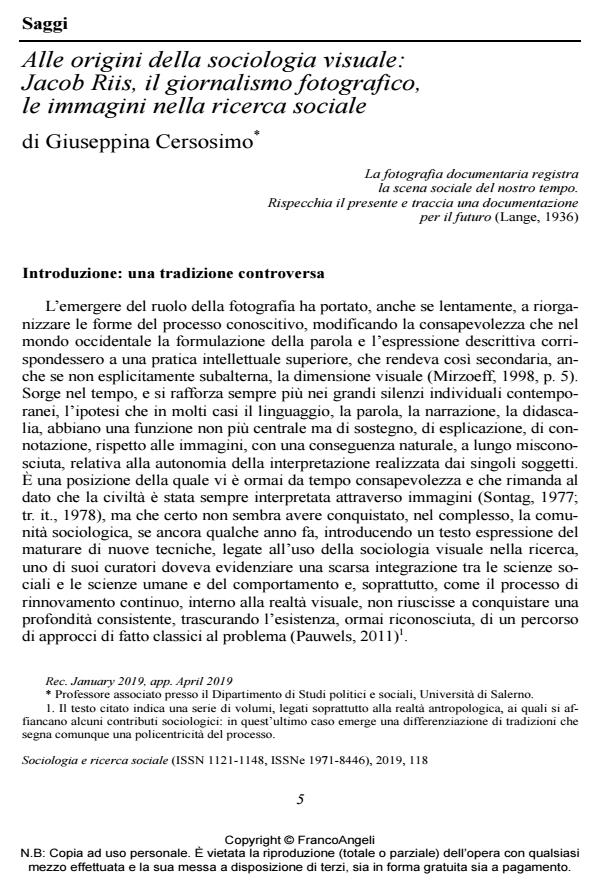Alle origini della sociologia visuale: Jacob Riis, il giornalismo fotografico, le immagini nella ricerca sociale
Titolo Rivista SOCIOLOGIA E RICERCA SOCIALE
Autori/Curatori Giuseppina Cersosimo
Anno di pubblicazione 2019 Fascicolo 2019/118
Lingua Italiano Numero pagine 24 P. 5-28 Dimensione file 252 KB
DOI 10.3280/SR2019-118001
Il DOI è il codice a barre della proprietà intellettuale: per saperne di più
clicca qui
Qui sotto puoi vedere in anteprima la prima pagina di questo articolo.
Se questo articolo ti interessa, lo puoi acquistare (e scaricare in formato pdf) seguendo le facili indicazioni per acquistare il download credit. Acquista Download Credits per scaricare questo Articolo in formato PDF

FrancoAngeli è membro della Publishers International Linking Association, Inc (PILA)associazione indipendente e non profit per facilitare (attraverso i servizi tecnologici implementati da CrossRef.org) l’accesso degli studiosi ai contenuti digitali nelle pubblicazioni professionali e scientifiche
The photographs Jacob Riis took during his investigation on the dramatic conditions of immigrants in New York, have a specific role in the construction of social analysis outside the university, and anticipate, as a method, the analyti-cal approach later developed by visual sociology. The cognitive process thus broadens the tools at its disposal and acquiring new analytical approaches. It is historically coherent with the new characteristics of social transformation and with the presence of new technological products in the society. The develop-ment of visual sociology, consistent with these premises, over time highlights the renewal within the sociological tradition not only of its theoretical focus, but also of its methodological one.
Giuseppina Cersosimo, Alle origini della sociologia visuale: Jacob Riis, il giornalismo fotografico, le immagini nella ricerca sociale in "SOCIOLOGIA E RICERCA SOCIALE " 118/2019, pp 5-28, DOI: 10.3280/SR2019-118001